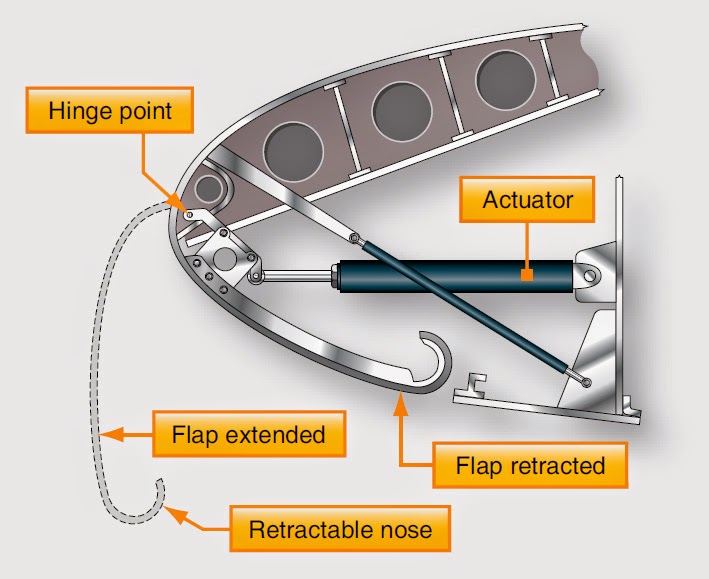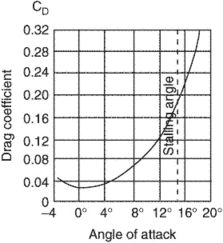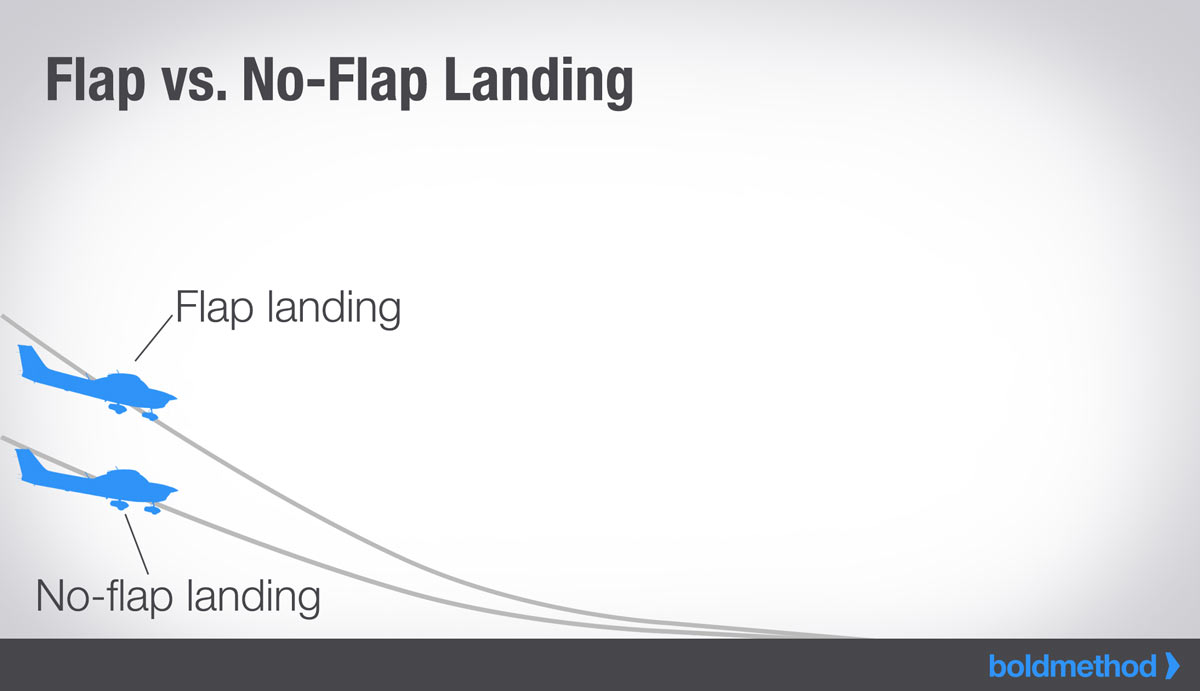22.12.8
Distinguish between the effects of lowering leading-edge flap on angle-of-attack, nose attitude and movement of the CP with those of trailing-edge flap.
Lowering leading-edge flaps allows a higher stalling angle of attack compared to trailing-edge flaps, and therefore a higher nose attitude. Typically up to 30° in a high performance jet aircraft. The centre of pressure moves forward compared with an aft movement for trailing edge flaps.

22.12.6
Explain the effects of lowering trailing edge flap on; Cl, CD, L/D ratio, CP movement, angle-of-attack and nose attitude.
There are several effects from using trailing edge flaps
The first of these is CL Coefficient of lift. The main effect of lowering flap is the CL is increased over all normal operating angles of attack. This means that at any airspeed extra lift is produced with the flaps down.

The next is CD Coefficient of drag When flaps are lowered Coefficient of drag is increased. As drag is higher the aircraft will tend to slow down, therefore the nose must be lowered to maintain the selected speed. This has the advantage of improving forward visibility. It also enables a steeper approach, which means better obstacle clearance. Having higher drag on landing also aids slowing the aircraft.
Changes in Lift/drag ratio, with a few exceptions, when flap is lowered the increase in CD is proportionally greater than the increase in CL. This reduces the lift/drag ratio of the aircraft. Usually the first 10° or so of movement produces the greatest increase in lift. The use of partial flap, up to 20° imparts the most lift with an almost unimportant increase in drag. Full flap, often called drag flap causes a much larger increase in drag.
A CP Centre of pressure movement is caused when the flap is lowered. The CP moves aft as the flaps are lowered
The Angle of attack with flaps lowered is reduced as is the stalling angle of attack. This angle is the geometric angle of attack which uses the original chord line as reference. If a new average chord line is drawn it will be seen that the aircraft will now stall at a similar effective angle of attack as the original geometric angle of attack.

Nose attitude is affected by lowering flaps, it’s affects are a product of the location of the wing. In a high wing aircraft lowering the flaps will cause a nose up pitching moment. In a low wing aircraft it will cause a nose down pitching moment.
22.12.4
Explain the basic principles of trailing and leading-edge devices.
Trailing and leading edge devices aim to provide the advantages of high lift at low speeds, without incurring the disadvantage of generating high drag at high speeds.
22.12.2
Explain the basic purpose of lift augmentation devices.
Lift augmentation devices help us by lowering the stall speed of the aircraft. This means we are able to approach the runway and land safely at a lower speed.
Why do we have to understand lift augmentation:
The wing of an aircraft is designed for high or
cruise speed where lift is mainly created by forward speed only; consequently
we need to know how these devices operate and their operating limits.
The Drag vs IAS Graph is a useful tool for understanding how drag affects Aircraft performance under varying conditions of performance in Straight and Level Flight
The graph gives us a ‘minimum drag speed’, which is the speed that the aircraft uses the least amount of fuel, which is also the speed at which we get the most endurance.
Graph Axes
X Axis – Indicated Airspeed (IAS)
Note: IAS is utilised as opposed to True Airspeed (TAS)
since DRAG = Coeff. Drag x ½ p V^2. S, where IAS represents 1/2 p V^2.
Y Axis – Total Drag
Note: Total Drag comprises Induced Drag plus Parasitic Drag. Induced Drag is generated as a component of the Total Aerofoil Lift Reaction. It is particularly significant at low IAS where the effective Angle of Attack is high. Induced Drag is proportional to the inverse of IAS.
Parasitic Drag is generated due to Skin Friction, Form and Interference Drag. Parasitic Drag is proportional to IAS.

22.10.30
Explain from a typical graph the most efficient angle of attack, the zero lift position, and the stalling angle.
qAs can be seen from the graph below, the typical figures for a general aircraft aerofoil that the most efficient angle of attack is approximately 4° angle of attack as this is the biggest difference between lift and drag. The zero lift position is -5° and the stalling angle is about 16°

22.10.28
Explain a typical graph for lift/drag (L/D) ratio versus α
The lift/drag curve shows how the ratio functions relative to angle of attack. As can be seen, L/D ratio increases almost linearly to about 5° angle of attack. then it reduces steadily until the stall angle then it rapidly drops off.

22.10.26
Distinguish between graphs for CD and total drag.
q

22.10.24
From information provided or a diagram identify the speed for minimum drag and maximum lift/drag ratio.









